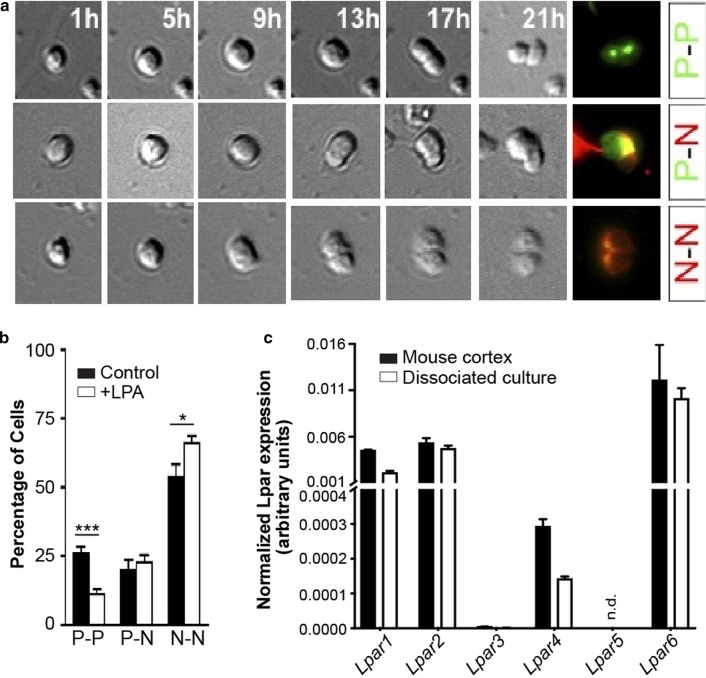Fig. 3.
LPA shifts the mode of division from proliferative to neurogenic. a Examples of progenitor cells giving rise to three types of daughter-cell pairs. Mitotic division of progenitors dissociated from E13.5 cerebral cortex was followed using time-lapse DIC imaging for 20 h. Daughter-cell fates were identified by immunolabeling progenitor cells with nestin (green) and neural progenitor cells with Tuj-1 (red). P–P: two progenitors; P–N: a progenitor and a neuron; N–N: two neurons. b Percentage of cells that underwent mitosis with P–P, P–N and N–N division during the time-lapse imaging. Methods: cortical cells were cultured in serum-free dissociation culture medium or 1 µM LPA-containing serum-free medium for 20 h. Data represents mean + S.E.M. (n = 7 replicate experiments, *P = 0.045, ***P = 0.00028, unpaired t tests). c QPCR-based expression levels of Lpar1-6 in E13.5 cortex and dissociated cortical cells after 20 h of culture in the control medium. Data are normalized to β-actin expression levels and shown as mean + S.E.M. (n = 3). Significance was analyzed by ordinary two-way ANOVA with Sidak’s multiple comparisons test. No significant differences were identified. n.d., not detected

